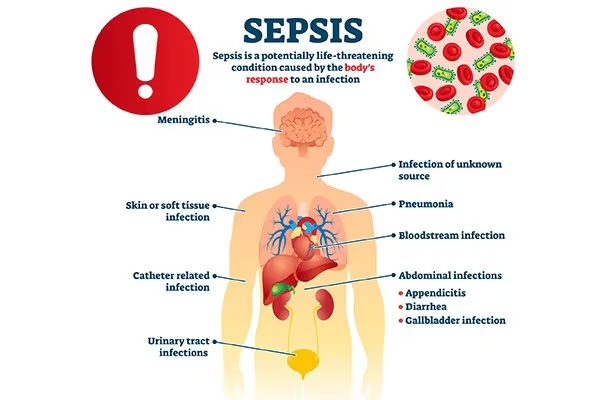

Sep 13 2022
Surviving Sepsis


Summary
Sepsis happens when an infection a person already has triggers a chain reaction throughout the body.
Sepsis is the body’s extreme response to an infection, and without timely treatment, sepsis can rapidly lead to tissue damage, organ failure and death.
Infectious disease specialist Mindy Prewitt, M.D., and others at North Mississippi Medical Center focus a great deal of their attention on preventing and treating this life-threatening medical emergency. “It’s important for people to know that you can’t ‘catch’ sepsis,” Dr. Prewitt says. “You develop sepsis as a result of an underlying infection. Sepsis happens when your body’s attempt to take care of the infection gets out of control.”
Sepsis happens when an infection a person already has triggers a chain reaction throughout the body. Sepsis can come from an infection anywhere, but it is most often linked to infections in the lungs (pneumonia), kidneys (urinary tract infection), skin (cellulitis) or bowel (colitis).
“Sepsis is like a runaway wagon out of control,” Dr. Prewitt says. “We’re the folks trying to jump on the wagon, grab the horse’s reins and slow it down.”
While almost any infection can lead to sepsis, certain people are at higher risk: adults 65 years or older, people with chronic medical conditions (such as diabetes, lung disease, cancer and kidney disease), people with weakened immune systems and children younger than 1 year old.
Someone with sepsis might exhibit one or more of these symptoms—high heart rate, confusion or disorientation; extreme pain or discomfort; fever, shivering, or feeling very cold; shortness of breath; and clammy or sweaty skin.
Dr. Prewitt explains that sepsis is a spectrum with varying degrees of severity, depending on how many of the body’s organs are affected. “With sepsis, a bacterial infection spreads throughout your body from the initial site. Certain places in the body should always be sterile—like the bloodstream or spinal fluid,” she said. “When bacteria invade these areas, it can lead to problems.”
Sepsis needs to be treated quickly. “Certain lab tests must be performed right away, and certain antibiotics must be given,” Dr. Prewitt says. “With sepsis, a person’s blood pressure drops, which means the heart can’t efficiently pump blood to all the organs. We must give IV fluids to raise the person’s blood pressure and monitor the person closely with telemetry, sometimes in the Critical Care Unit.”
Sepsis can develop at home or in the hospital. “Get medical care immediately if you suspect sepsis or have an infection that’s not getting better or is getting worse,” Dr. Prewitt says.
The U.S. Centers for Disease Control offers more information about sepsis here.


Subscribe to Our Newsletter
Like this content and want to get more? Sign up for True North, the health and wellness newsletter from North Mississippi Health Services!

Subscribe to Our Newsletter
Like this content and want to get more? Sign up for True North, the health and wellness newsletter from North Mississippi Health Services!

Nurse Link®
Call 1-800-882-6274 anytime to speak directly to a registered nurse and get immediate answers. Using computerized medical protocols, nurses direct callers to the most appropriate medical treatment. Our nurses are available 24 hours per day, seven days per week.